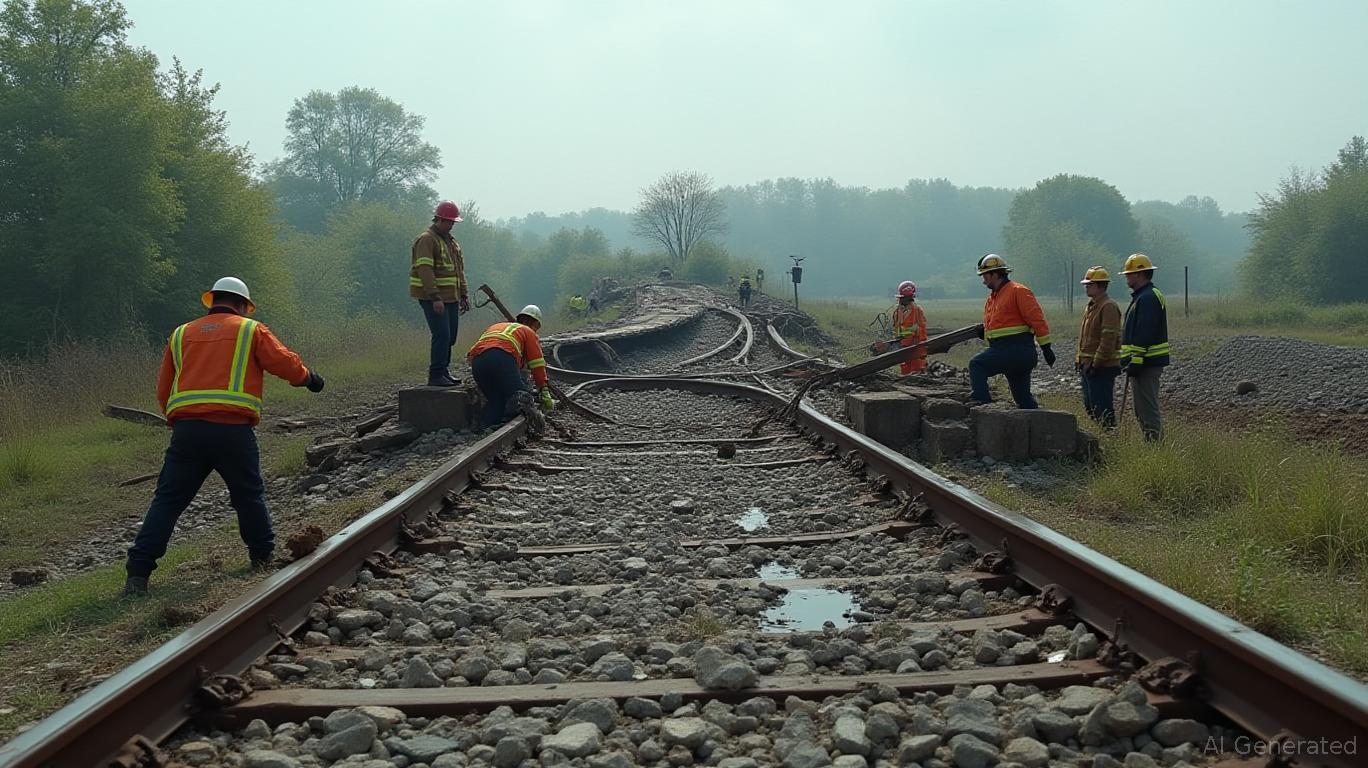Bryansk Bridge Collapses Signal Geopolitical Peril for Russian Rail Infrastructure – Time to Diversify Exposure?
The recent collapse of a bridge in Russia's Bryansk region, derailing a passenger train and killing seven, marks the latest escalation in a years-long pattern of cross-border sabotage targeting critical infrastructure. This incident—coupled with a simultaneous collapse in the Kursk region—exposes systemic vulnerabilities in Russian railways, threatening regional economic stability and raising red flags for investors. With over 200 such attacks recorded since 2022 and geopolitical tensions reaching new heights, the risks to Russian equities and infrastructure bonds are undeniable.

A Pattern of Sabotage, Not Accident
The May 31 bridge collapse near Klimovo was no isolated incident. Over the past 18 months, cross-border attacks have systematically targeted railways in border regions like Bryansk and Kursk, disrupting military logistics and civilian transport alike. Ukrainian partisan groups, such as Atesh, have claimed responsibility for similar acts, while Russian authorities blame Kyiv for turning its territory into a “terrorist enclave.” Yet the true threat lies not in attribution, but in the escalating frequency and sophistication of these attacks.
The economic fallout is already severe. Cross-border freight costs have surged as rerouting and delays eat into profit margins. reveals a stark underperformance, with shares down 40% compared to peers—a decline driven by operational chaos and geopolitical risk. Insurance premiums for rail-related assets have tripled since 2022, further squeezing margins for companies reliant on Russian logistics.
Why Investors Must Act Now
The risks are twofold:
1. Direct Exposure to Russian Infrastructure Bonds: Municipal and corporate bonds tied to railways or energy projects face default risks as sabotage disrupts cash flows.
2. Sectoral Contagion: Even non-Russian companies with supply chains passing through Bryansk or Kursk (e.g., auto manufacturers, commodity traders) face cascading disruptions.
The writing is on the wall for investors. As NATO deploys anti-infrastructure patrols and the EU considers sanctions on Russian rail operators, the geopolitical risk premium for Russian assets is here to stay.
Diversify or Perish: The Path Forward
To mitigate risk, portfolios must pivot toward resilience-driven sectors:
- Cybersecurity: Firms like Dragos (DGOS) and Skydio (SKDY) are fortifying critical infrastructure against hybrid threats.
- Drone Surveillance: Companies such as DroneDeploy and Wingtra offer real-time monitoring of railways, reducing vulnerability to sabotage.
- Alternative Logistics Routes: The Caspian Corridor, with a 25% freight volume surge in 2024, offers a safer alternative to Russian railways.
- Infrastructure Hardening: Firms like Bloom Energy (BE) and Hexagon (HEXAb) are retrofitting railways with blast-resistant materials and AI-driven predictive maintenance.
Meanwhile, short Russian equities exposed to rail logistics (e.g., RZhD, Gazprom Neft Logistics) and avoid infrastructure bonds in border regions. Geopolitical instability is now a permanent feature—not a temporary blip—for Russian assets.
Conclusion: The Clock Is Ticking
The Bryansk bridge collapse is not an anomaly—it's a harbinger. With sabotage incidents rising and diplomatic solutions stalled, investors holding Russian infrastructure-linked assets are gambling with their portfolios. The time to diversify into resilient, conflict-proof sectors is now. Those who delay risk obsolescence in a world where railways are both lifelines and battlegrounds.
Act decisively. Adapt strategically. Avoid obsolescence.

Comments
No comments yet